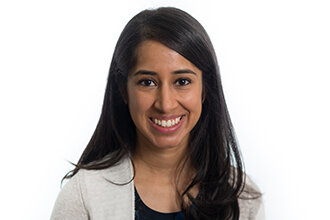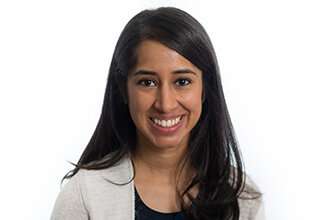Eliminating microaggressions in pediatric education

A patient is told their name is hard to pronounce. A doctor tells another doctor they speak English really well. While doing rounds, a resident is asked if she eats ‘strange foods’.
These are examples of microagressions—behaviours or remarks rooted in unconscious bias, which can be related to elements of a person’s identity such as race, gender, religion, sexuality or physical or intellectual ability. While the word suggests the act is small or subtle, their impact can be deep and lasting. For staff in a hospital setting, microagressions can impede learning, work and performance. They can also impact career decisions.
Three Toronto research scientists explored how microagressions affect medical students training to be pediatricians. Their commentary, published recently in Pediatrics, looked at what microagressions are, their presence in the learning environment, and opportunities for everyone to learn about how to stop them.
Here, we spoke to authors Dr. Shazeen Suleman, a Scientist at the Li Ka Shing Knowledge Institute and pediatrician at St. Michael’s Hospital; Kimberly Young, a senior medical student at the University of Toronto; and Dr. Angela Punnett, a pediatric oncologist at the Hospital for Sick Children (SickKids), about their analysis and why it’s important to help people spot microagressions when they happen—and how to respond.
Why is pediatric medical education an important area for learners and teachers to consider their own biases?
In pediatrics especially, all of our encounters include one very impressionable person: the child or youth patient themselves. If we are truly going to provide inclusive and supportive care for our young patients, we must pay attention to the biases that we may inadvertently be telling them about themselves or others.
What are some ways that different groups can prepare for, recognize, and respond to microaggressions?
It starts with each of us as individuals educating ourselves about racism, xenophobia and other forms of discrimination in our communities, both historical and current. We can take the initiative ourselves and as institutions, we can support formal educational initiatives to do this.
Second, we need to do a better job of listening to those who have experienced microaggressions. By their definition, microaggressions are often subtle and easily missed. Building caring communities where open conversations on difficult topics can be held is an important part of this. That same caring community should encourage individuals to recognize that making mistakes is part of growth, and it is how we respond and learn from these mistakes that is essential.
Third, and perhaps most important, we need to have organizations that represent the communities we serve. As we write in our paper, it is impossible to respond to a transgression if you do not recognize it. By having people with lived experiences be represented in our institutions and communities, we can reduce microaggressions before they happen.
What advice would you give learners who encounter microaggressions in their learning environment?
First and foremost, we would say to the students directly we are sorry this has happened to you. We see and hear you. What you have experienced is real and your feelings—whatever they are—are extremely valid.
Secondly, what you have experienced is not okay, and we should not normalize it. We hope we can continue to increase the number of faculty and staff allies who can also be available to recognize, intervene in the moment and provide you with support. Please reach out to us if you need to! And most importantly, we hope our work leads to fewer and fewer encounters like this.
What do you hope that people who read your article will come away with?
We really hope that readers, especially learners, will feel validated. We want them to be able to start to think about the moments where they felt uneasy and realize that was a real feeling and experience.
For educators reading this, we hope they also think about those same encounters and reflect on how a comment may have been hurtful, even if unintentional.
We hope people will realize that there is a way forward to address these, and it requires each of us as individuals to act, but also support one another as a community while building better and more inclusive institutions.
What do you hope for the future of pediatric medical education?
Source: Read Full Article
